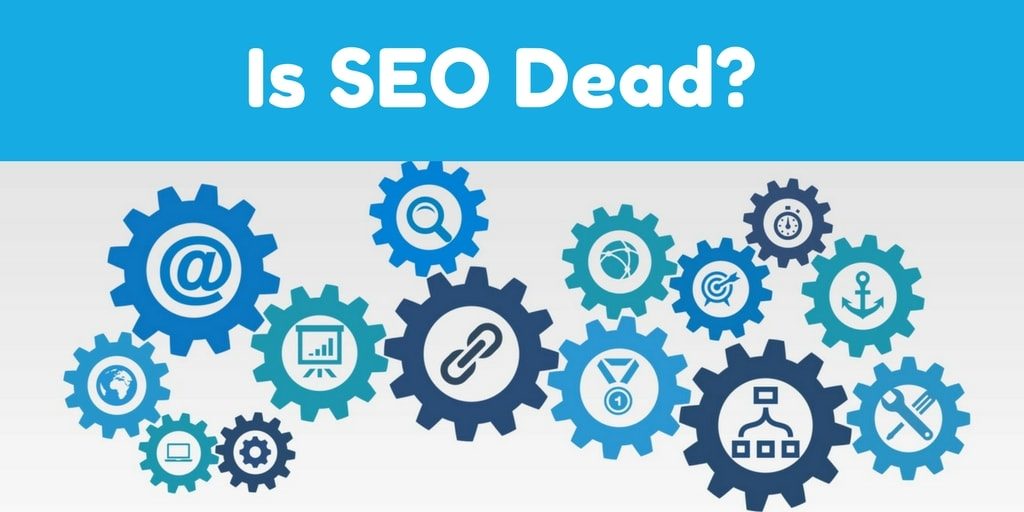Profit and cash flow are two financial terms that get tossed around like they mean the same thing. They don’t. And if you’re running a business, mixing up cash flow vs profit can lead to decisions that quietly drain your company’s health.
In this guide, you’ll learn the clear difference between the two, why each one matters, and how to keep both in check so your business stays alive and thrives.
What is Cash Flow?
Cash flow is the actual movement of money in and out of your business account. It tracks when cash enters from sales, loans, or investments, and when it exits to cover rent, payroll, inventory, or other expenses.
The timing of these movements is everything, especially when you’re trying to pay bills or keep operations steady.
A business can be profitable on paper and still run out of cash if payments are delayed or expenses spike unexpectedly. That’s why monitoring cash flow isn’t optional, it’s the real pulse of your business.
When cash dries up, your business stalls, even if profits look fine in your books.
What is Profit?
Profit is what’s left after you subtract all your business expenses from your total revenue. It’s a snapshot of financial success over a set period, typically shown on your profit and loss statement. Unlike cash flow, it doesn’t reflect when money moves, just that it should be there.
There are different types of profit: gross, operating, and net, each telling you something about how efficiently your business runs. Profit looks good in reports and might impress investors, but it doesn’t guarantee you have money in the bank today.
Cash Flow and Profit: How They Truly Differ
Cash flow and profit are often used interchangeably, but they measure completely different financial realities. One tracks the timing of money movements, while the other focuses on bottom-line performance.
Mixing them up can distort how healthy your business actually is. Let’s breaks down their key differences.
| Cash Flow | Profit |
| Timing vs. Outcome: Cash flow tracks money when it actually enters or leaves your account. It reflects real-time financial activity, what’s paid, what’s received, and when. | Timing vs. Outcome: Profit is calculated based on revenue earned and expenses incurred, regardless of when cash is exchanged. |
| Daily Survival vs. Financial Performance: Cash flow impacts your day-to-day operations. It determines if you can pay employees, vendors, and bills without delay. | Daily Survival vs. Financial Performance: Profit reflects long-term financial health and performance. It shows how well your pricing, cost control, and business model are working over time. |
| Statement Location and Reporting: Found in the cash flow statement. It’s divided into operating, investing, and financing cash flows to show where money comes from and where it goes. | Statement Location and Reporting: Found in the income statement (also called the profit and loss statement). It’s broken into gross, operating, and net profit. |
| Cash Can’t Be Faked, Profit Can: Cash flow shows actual movement of money. It’s difficult to manipulate because it reflects real transactions. | Cash Can’t Be Faked, Profit Can: Profit can be shaped using accounting strategies like depreciation schedules or delayed expense recognition. |
| Accrual vs. Cash-Based Accounting Impact: Cash flow is typically aligned with cash-based accounting, where transactions are recorded when cash is received or paid. | Accrual vs. Cash-Based Accounting Impact: Profit often uses accrual accounting, where income and expenses are recorded when earned or incurred, not when cash moves. |
| Flexibility in Interpretation: Cash flow is rigid and straightforward, money moved or it didn’t. That makes it a more dependable tool for checking liquidity. | Flexibility in Interpretation: Profit has more flexibility in how it’s reported. Different accounting methods and timing strategies can affect how much profit shows up on paper. |
Timing vs. Outcome
Cash flow is all about when money actually moves through your business, when it’s received or spent. Profit focuses on the end result of business activity, measuring how much you earned after expenses, even if the cash hasn’t landed yet.
This timing gap means you can appear profitable while struggling to pay rent. Profit shows performance; cash flow reveals availability.
Daily Survival vs. Financial Performance
Cash flow determines if you can keep your business running in real time, covering expenses like payroll, rent, and supplies. Profit reflects how well your business performs over time, signaling sustainability, pricing strength, or cost efficiency.
You can be profitable and still run out of money if customers delay payments or if expenses surge unexpectedly. Cash keeps the doors open; profit tells the story behind the scenes.
Statement Location and Reporting
Cash flow lives in the cash flow statement, which breaks down where your money is coming from and where it’s going. It includes three sections: operating, investing, and financing cash flow, all tied to different types of business activity.
Profit is found on the income statement and categorized into gross, operating, and net profit. Each report serves a different purpose, and reading one without the other gives you an incomplete view.
Cash Can’t Be Faked, Profit Can
Cash flow is grounded in real-time transactions, making it harder to distort or sugarcoat. Profit can be manipulated with accounting choices like deferring expenses, accelerating revenue, or applying depreciation differently.
These tools aren’t always shady, but they can make things look better than they are. If you’re trying to understand financial reality, cash tells the truth faster.
Accrual vs. Cash-Based Accounting Impact
Accrual accounting books revenue when earned and expenses when incurred, regardless of cash movement. This creates profit figures that don’t always match the money you have on hand.
Cash-based accounting, on the other hand, only records income and expenses when money physically changes hands. That’s why two businesses with identical revenue can have wildly different bank balances.
Flexibility in Interpretation
Profit allows for some degree of creative structuring depending on your accounting methods, which can affect how income and expenses are reported. Cash flow offers far less wiggle room, it tracks actual money movement, making it a more rigid but honest measure.
This difference matters when presenting to investors, managing operations, or preparing for taxes. If profit looks good but cash is low, you’ve got a gap that needs fixing.
Different Types of Cash Flow and Profit
Cash flow and profit each have categories that paint a fuller picture of your business’s finances. Understanding how these types work together gives you more control over how your money moves, and what it actually means when it does.
Cash Flow
Operating Cash Flow
Operating cash flow shows how much money your business brings in and spends through its core activities. This includes income from sales, payments to suppliers, payroll, rent, and day-to-day operating expenses.
It’s one of the clearest indicators of short-term financial health. A positive number means your business is generating enough to run itself without relying on loans or outside cash.
Investing Cash Flow
Investing cash flow tracks money used to buy or sell long-term assets like equipment, property, or securities. This section includes cash spent on things that are expected to generate future value.
A negative figure here often signals that you’re making big moves to grow your business. Positive investing cash flow can mean you’re selling off assets, but that’s not always a good thing.
Financing Cash Flow
Financing cash flow reflects how you raise and repay money from external sources like loans, investors, or owners. It shows how your business funds its operations or expansion through debt or equity.
Taking out a loan or issuing shares adds cash; repaying loans or paying dividends reduces it. This is where you’ll see how much your growth is being fueled by borrowed money.
Profit
Gross Profit
Gross profit is what’s left after subtracting the direct costs of producing your product or service. It shows how efficiently your business turns raw materials or inventory into revenue.
This number doesn’t include overhead, payroll (unless tied to production), or other operating expenses. A strong gross profit gives you room to cover other costs and still come out ahead.
Operating Profit
Operating profit digs deeper by subtracting all operating expenses from your gross profit. This includes rent, payroll, marketing, and utilities, basically, anything tied to keeping the business running.
It reflects how profitable your core operations are without considering loans or taxes. People often call it EBIT (Earnings Before Interest and Taxes).
Net Profit
Net profit is what remains after every single expense is taken out, including interest, taxes, and one-time costs. It’s the final number that shows how much your business truly earned over a period.
This is the figure most people refer to when they say “bottom line.” It’s also what gets reported on your tax return.
Which One Matters Most in Real Life?
The answer depends on your situation. Are you trying to stay afloat, scale up, impress investors, or manage a tight season? Sometimes, you need to focus on what’s in your account today. Other times, it’s about showing the business actually works on paper.
Here are four real-life scenarios, two for cash flow, two for profit, to show how the priority changes based on your goals and challenges.
When Cash Flow Matters Most
1. Retail Store in Off-Season
A surf shop in a beach town sees heavy sales during summer but hits a revenue slump in the winter months. The owner needs to manage rent, staff wages, and inventory purchases during off-peak months, even if the previous summer showed strong profits. Cash reserves and inflows become the key to staying open until the next wave of sales.
Example Table – Surf Shop (Off-Season Snapshot)
| Metric | Amount |
| Total Annual Profit | $80,000 |
| Current Month Revenue | $4,000 |
| Monthly Operating Costs | $10,000 |
| Cash on Hand | $7,000 |
| Inventory Reorder Due | $5,000 |
Insight: The business made good money in peak season, but now struggles with daily expenses. Profit isn’t saving them, cash is.
2. Manufacturing Business Waiting on Bulk Payments
A major retailer will take 90 days to pay a small manufacturer for a bulk order. Meanwhile, payroll, utilities, and material costs continue. Even though they log the sale as revenue, the company operates on fumes until the money actually arrives.
Example Table – Manufacturer (Order Fulfillment Month)
| Metric | Amount |
| Revenue from Order | $300,000 |
| Payment Due In | 90 days |
| Current Cash Flow | Negative |
| Payroll Due This Month | $45,000 |
| Operating Cash on Hand | $12,000 |
Insight: A big sale doesn’t mean stability when cash hasn’t hit the account. Managing working capital is everything here.
When Profit Matters Most
1. E-commerce Brand Seeking Acquisition
An online clothing brand is growing fast and preparing for acquisition talks. The buyer wants to see clean profit margins and proof that customer acquisition isn’t eating the entire revenue. Cash flow is strong due to high sales, but it’s profitability that seals the deal.
Example Table – E-commerce Business (Valuation Snapshot)
| Metric | Amount |
| Monthly Revenue | $500,000 |
| Ad Spend | $200,000 |
| Product Costs | $150,000 |
| Other Expenses | $50,000 |
| Net Profit | $100,000 |
Insight: Even with cash rolling in, a low profit margin could scare buyers. Profit proves the business isn’t bleeding cash under the surface.
2. Tech Company Scaling Internationally
A profitable software company is expanding into international markets. They’ve secured a line of credit and raised funding, so cash is available. What matters most now is demonstrating they can remain profitable while growing operations overseas.
Example Table – SaaS Company (Expansion Quarter)
| Metric | Amount |
| Revenue | $1,200,000 |
| Expansion Expenses | $300,000 |
| Operating Expenses | $600,000 |
| Net Profit | $300,000 |
| Cash on Hand | $1,000,000 |
Insight: They have cash to burn, but it’s profit performance during expansion that reassures investors they’re not scaling recklessly.
Cash Flow vs Profit: Final Verdict
Profit tells you if your business should work, while cash flow tells you if it can keep running. Focusing on one without the other leads to blind spots, strong profit with weak cash flow can shut you down, and healthy cash flow without profit means you’re just treading water.
Long-term success comes from managing both with precision, timing, and the discipline to read what your numbers are really saying.
Frequently Asked Questions
How often should a business review its cash flow statement?
A business should review its cash flow statement at least once a month to monitor liquidity and avoid shortfalls. Consistent review helps detect cash issues early, adjust spending, and ensure enough money is available to cover operating costs and growth activities.
Can a business have strong cash flow and still be financially unhealthy?
Yes, a business can have strong short-term cash flow while neglecting long-term profitability or accumulating excessive debt. Without a sustainable business model, solid cash flow won’t protect against financial decline over time or poor strategic planning.
Why do startups often prioritize cash flow over profit?
Startups prioritize cash flow because they need liquidity to survive early stages where profitability may not yet be realistic. Managing inflows and outflows ensures they can meet payroll, invest in growth, and avoid running out of money before reaching stability.
Related:
- How to Build a 7-Figure Business: 10 Strategies for Growth
- Starting Up a Business: 26 Lessons For New Entrepreneurs
- How to Write a Business Plan: A Step-by-Step Guide

We empower people to succeed through information and essential services. Do you need help with something? Contact Us.
Want a heads-up once a week whenever a new article drops?







